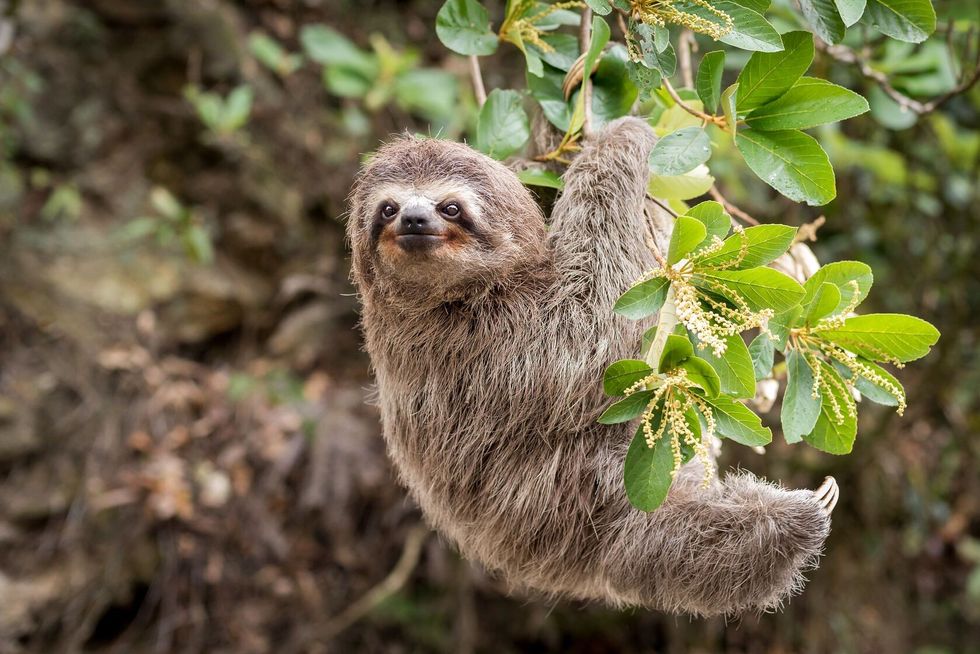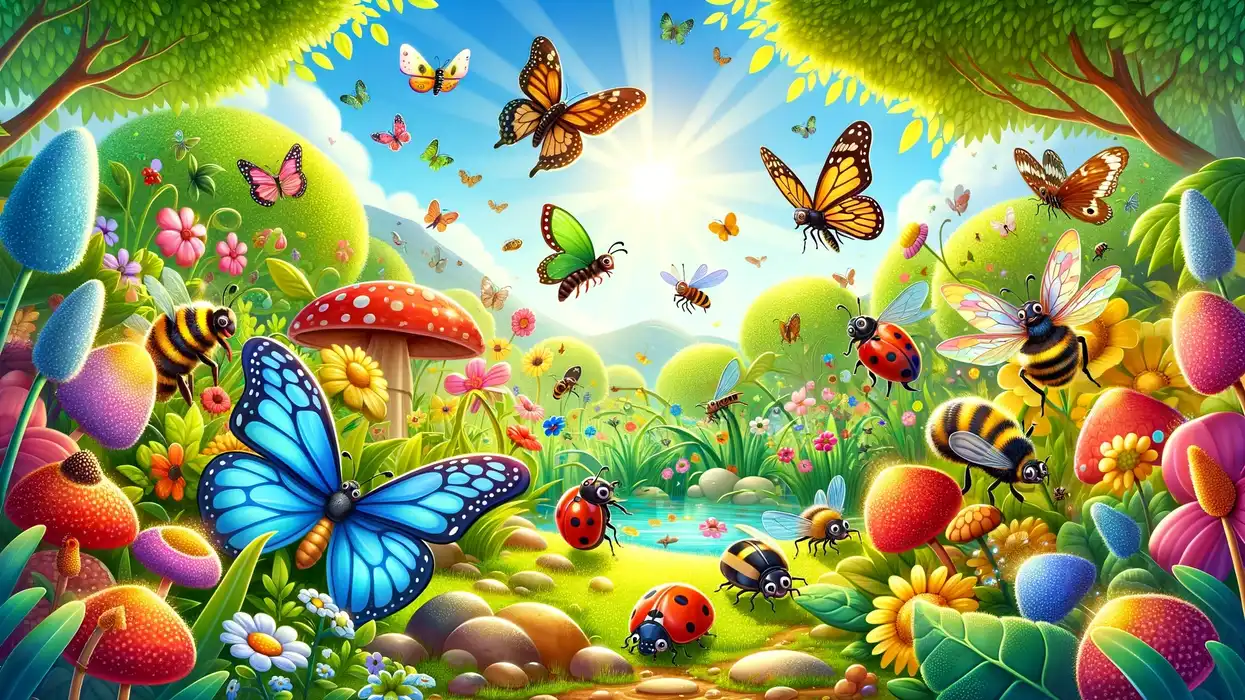Imagine a world so peaceful; every move is gentle, and every breath, a deep sigh of contentment. This is the world of the sloth, a creature whose slow life could teach a thing or two about relaxing and just being.
When you think about animals, the fast ones like cheetahs or birds of prey often come to mind. But what about the slower side of the animal kingdom? It turns out slower animals have special ways to survive and thrive. Being the slowest can also mean being smart about saving energy and avoiding predators.
Sloths are famous for their leisurely lifestyle, but they are not the only creatures in nature that take things at a super relaxed speed. These animals have adapted to their environments in amazing ways by moving slowly.
Are you curious to tiptoe into a world where the hustle and bustle gives way to calm? In this article, you'll discover why being the slowest animal in the world is the sloth's secret to a happy life. Taking things easy can bring forth joy, surprises, and even adventure.
The Slow And Steady Sloth
 Shutterstock
ShutterstockHave you ever watched a sloth move? It's like watching nature in slow motion. These furry creatures are often dubbed the slowest animals in the world, taking life one gentle step at a time.
- Sloths mainly live in the rainforests of Central and South America, spending most of their lives hanging upside down from trees.
- With long arms and hooked claws, they're perfect for treetop life, moving at an average of 0.2-0.3 mph (0.3-0.5 kph).
- Being the slowest mammal is actually their superpower. Sloths have a slow metabolism that helps them conserve energy, which is handy since their diet of leaves doesn't give them much fuel.
- Sloths defy gravity by spending most of their time hanging relaxedly among the branches. They have special tendons in their hands that lock into place, allowing them to hang without using energy.
- These laid-back animals are so chill they sleep up to 15-20 hours daily. You'll find them munching leaves or sunbathing high in the treetops when they are awake.
- Sloths only leave their tree haven about once a week for a bathroom break on the ground. This is the only time they move a bit more swiftly, as being on the forest floor makes them more vulnerable.
- Their slow lifestyle also limits noise, helping them stay nearly undetectable to jaguars and eagles, their main predators.
- Sloths produce virtually no body odor, avoiding predators that hunt by scent. The algae and fungi growing on their fur actually make them smell like plants rather than prey animals.
- Interestingly, sloths are more graceful and quicker in water than on land. When they swim, they do it quite well and can move three times faster than their usual on-land speed.
- Sloths have blurry vision adapted to the dim rainforest light but rely more on smell and camouflage to find food and avoid predators.
- Three-toed sloths (Bradypus) are known for their greenish fur, which comes from the algae that grow on them. This not only helps them hide in the trees but also colors them a leafy green to match their rainforest home.
- Two-toed sloths (Choloepus) have bigger, rounder heads and two big toes on their front feet. They move quietly and like to be active when it's dark outside.
More Than Just Sloths: A World Of Slow Movers

It's not just sloths that embrace a slow pace; several other animals in the world share the slow lane. From slugs that slide to tortoises that take their time, meet the other members of nature's relaxed club.
- The adult manatee, sometimes called a sea cow, is a slow swimmer, typically gliding at the pace of 5 mph (8 kph). Adult manatees even sleep underwater!
- Slow lorises, apart from having one of the cutest faces, are known for their slow and deliberate movements in Southeast Asian trees.
- Giant tortoises, like the Galapagos tortoise, move at 0.2 mph (0.3 kph), carrying their heavy shells, which they use as portable homes.
- Sea stars, commonly known as starfish, found in the oceans' coral reefs, move so slowly using their wiggly tube feet that it can be hard to tell they're moving at all!
- The garden snail may seem like it's not in a rush to get anywhere. With its one muscular foot, it glides along leaving a trail of mucus to reduce friction.
- The pygmy seahorse is a tiny marvel that blends in with its coral surroundings, making it difficult to spot as it drifts with ocean currents.
- The leafy sea dragon (Phycodurus eques) is a slow-pacer that looks like floating seaweed. Its thin fins help it move through water, and it's almost invisible to the eye.
- Chameleons move slowly while independently scanning with their eyes to locate insect prey before coordinating both eyes for accurate tongue strikes.
Tiny But Mighty: Small, Slow Creatures

Some of the slowest creatures are also among the tiniest in the animal kingdom. They show that taking time can be the way to go, even in small packages.
- Banana slugs are not fruits but gastropods (a group of animals like snails and slugs with a single, muscular foot) that move much slower than sloths.
- Koala bears are adorable but also slow-moving creatures. They conserve energy by resting for up to 20 hours daily and munching slowly on eucalyptus leaves.
- Gila monsters may seem fierce with their powerful bite, but they move slowly and would rather spend their days relaxing than hunting down prey.
- The coral reef-dwelling sea horses are another example of small, slow-moving marine creatures. Delicate and often only a few inches long, sea horses propel themselves through water with small, flapping fins that make for a leisurely swim.
- American woodcocks, also known as timberdoodles, have a unique method of attracting mates through a performance known as the 'sky dance'. On the ground, they move slowly, and their feathers help them blend into the forest floor, allowing them to remain concealed.
- Tardigrades are tiny micro-animals that move very slowly through moisture films. Despite their size and slow movement, they have survived extreme environments and the test of time.
Speed Isn't Everything: The Advantages Of Being Slow
Being the slowest animal in the world might seem like a downside, but these species show that there are many pros to a slow and steady lifestyle.
- A slow pace allows many animals to save energy, which is crucial for survival, especially when food is scarce.
- Moving slowly can also make an animal less noticeable to predators, which is a clever way to stay off the menu.
- Some animals, like the slow-moving American woodcock, blend into their habitat perfectly, making them nearly invisible to prey and predators.
- Even though they're slow, animals like the Galapagos tortoise have lived for over a century, proving that a relaxed pace can lead to a long life.
FAQs
Are sloths always slow?
Indeed, sloths maintain a slow pace in all their activities, from moving to eating. This is because their energy needs are remarkably low. Sloths have a unique stomach that digests food very slowly, and their muscle arrangement doesn’t allow fast movement.
This slow digestion and deliberate movement mean sloths use less energy than many other animals, which perfectly suits their low-calorie diet.
Why don't predators always catch slow animals?
Slow animals may not run to safety, but they have clever ways to stay safe. Some, like the garden snail, have hard shells for protection. Others blend into their environment so well that they become nearly invisible.
For instance, the leafy sea dragon looks so much like seaweed that it rarely gets noticed by predators in the ocean. This art of camouflage provides an effective defense strategy, turning slow speed into an advantage.
Can any slow animals move fast when they need to?
It’s fascinating, but yes, some slow animals can pick up the pace in emergencies. The Gila monster, for one, can scurry away quickly from a threat despite its usual sluggish crawl.
Some, like the American woodcock, can burst into short flights to evade predators, but they typically prefer their slower pace.
However, these bursts of speed are short-lived and used only when necessary, as they require a large amount of energy.
Do all slow animals have the same diet?
The diets of slow animals are as diverse as their environments. Some, like the koala bear, have highly specialized diets, feeding almost exclusively on eucalyptus leaves, which are toxic to most animals.
Others, like giant tortoises, are less picky. They enjoy a varied diet that includes grasses, fruits, and cacti, which provide the nutrients they need to support their hefty builds without needing speed.
Is being slow ever a problem for these animals?
While a slow pace serves these animals well in their natural habitats, it does make them more vulnerable to human-caused changes, such as habitat destruction and pollution.
For instance, when a forest is cut down, sloths may struggle to find enough food and lose their natural camouflage, making them easier targets for predators.
Therefore, conservation efforts become critical to ensure that these marvelously unhurried creatures can continue to thrive in peace.
What is the slowest mammal?
The title of the slowest mammal goes to the three-toed sloth! These relaxed animals are known for their incredibly slow and careful movements among the treetops.
Given their slow metabolism and energy-saving lifestyle, three-toed sloths maintain an unhurried pace of life. They move through the trees at around 0.2-0.3 mph (0.3-0.5 kph) and rest up to 20 hours daily.
This leisurely way of life helps them conserve energy and stay hidden from any creatures that might consider them a tasty treat.
Which is slower, a snail or a sloth?
Believe it or not, a snail is actually slower than a sloth! Even though sloths have gained fame for being the world's slowest mammal, garden snails take the crown in the race of slowness.
A garden snail can move at a speed of less than 0.1 mph (0.2 kph), using its sticky muscular foot to glide across surfaces slowly. In comparison, a sloth's average speed is around 0.2-0.3 mph (0.3-0.5 kph) when climbing trees, but they can move a tiny bit faster when needed, especially on the ground.
Who is slower, a sloth or a turtle?
This is a close call! Sloths and tortoises both have reputations for being slowpokes. However, tortoises, especially the giant Galapagos tortoise, might be a tad slower on land, with a top speed of around 0.2 mph (0.3 kph). Sloths have a similar slow pace in the trees but can swim quite well, giving them an extra speed boost when in water.
Of all the creatures in the animal kingdom, some of the slowest are actually the most interesting. Sloths and tortoises, for example, have developed unique adaptations that allow them to conserve energy and stay safe from predators. These animals serve as a reminder that success in nature doesn't always come from speed alone.
Next time you're in a rush, remember these creatures and know that sometimes, taking it slow can result in a satisfying and complete life. Whether they are slowly crawling on the ground or gracefully gliding through water, these incredible animals display that slow and steady can truly win the race!
Related Articles Around the Web




 Shutterstock
Shutterstock






